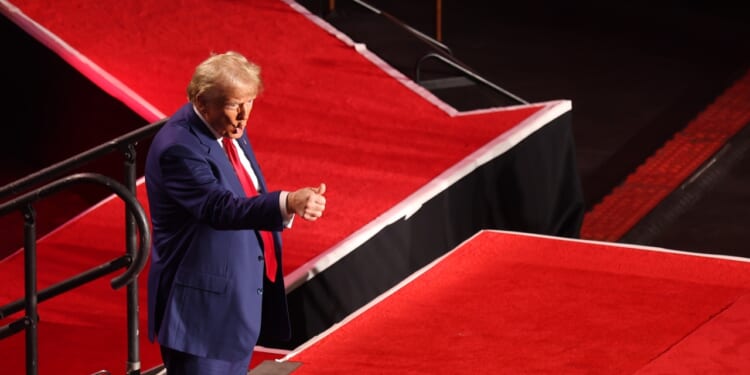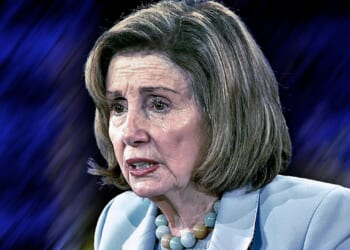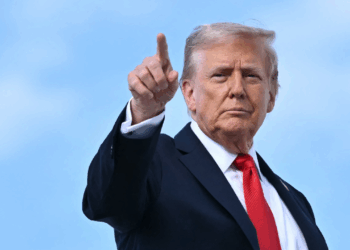The Trump administration’s renewed focus on nuclear issues after decades of neglect is welcome. But America is not prepared for a new nuclear test.
President Donald Trump now wants the United States to resume its Cold War-era pastime of testing nuclear weapons. On October 29, the 47th president made the announcement that the United States would resume nuclear testing—claiming it was in response to growing threats from rival nuclear powers, such as the Russian Federation and the People’s Republic of China (PRC). In typical Trumpian fashion, the announcement was totally out-of-the-blue—and seemingly poorly thought out.
Let’s clarify certain aspects of the story before criticizing it. For starters, the president is correct to be concerned that the United States has fallen behind in the realm of nuclear weapons. Quite frankly, America fell behind at least a decade ago, as preeminent nuclear warfare theorist Paul Bracken outlined in his 2012 book, The Second Nuclear Age: Strategy, Danger, and Power Politics.
Back then, the Yale University professor correctly assessed that America’s nuclear arsenal had effectively withered on the vine at a time when other great powers—notably Russia—were rapidly expanding and modernizing their arsenals.
Why Do Nations Test Their Nuclear Weapons?
Nuclear weapons testing often serves two main purposes. The first is to signal deterrence; to indicate to a country’s nuclear foes that it is willing to go all the way and to remind them that it has its own capabilities. The second master that nuclear weapons tests serve is to ensure that these systems actually work. Believe it or not, if nuclear weapons are not tested consistently, like any manmade system, they might not work as advertised when (God forbid) they are needed.
The only trouble for Trump is that there are a bevy of protocols, treaties, and reactions from US rivals (notably Russia) that must be factored into any move to restart nuclear weapons testing.
For instance, many years ago, the United States signed the Partial Test Ban Treaty (PTBT), which prohibits nuclear explosions in the atmosphere, outer space, or even underwater. The only form of testing allowed is underground testing, typically in deeply-drilled mine shafts—precluding the iconic “mushroom cloud” that most associate with nuclear weapons detonation.
Then there’s the Threshold Test Ban Treaty (TTBT) between the United States and former Soviet Union, which limited underground tests above 150 kilotons yield.
The major multilateral treaty that everyone is concerned about is the Comprehensive Nuclear-Test-Ban Treaty (CTBT) which prohibits any nuclear explosion in all environments. America signed the treaty on September 24, 1996, but never ratified it. Because the CTBT has never entered into force, its legal force is limited. Nevertheless, until the return of Trump to the White House, America observed a voluntary moratorium on nuclear-explosive testing since 1996.
If the United States conducted a nuclear explosion, that would not necessarily violate any of its treaties (as long as it did it in accordance with their limitations). It would, however, violate the norm of the CTBT—and would certainly do reputational damage to the United States on the world stage.
Trump Might Already Be Thinking Twice About Nuclear Testing
Despite Trump’s usual braggadocio, his administration’s officials almost immediately walked back from the sweeping nature of Trump’s announcement. Rather than straight-up nuclear weapons tests, the Trump administration’s Secretary of Energy Chris Wright clarified that the proposed tests would not include explosions.
Essentially, Wright was modulating the concerns of many that Trump was readying to violate key norms that have effectively ensured that no major nuclear weapons tests were conducted globally—especially among the great powers.
Should the United States return to testing, those tests could aim to determine or validate several strategic variables. Among these variables are whether warheads and delivery systems (missiles, bombs, etc.) work as designed under real-world conditions rather than only via simulation. Many of America’s warheads are from the Cold War. They are, therefore, old. Testing could help confirm that the aging components—plutonium pits, high explosives, seals—remain reliable. Some in America’s nuclear enterprise argue that only a full explosion can detect areas in America’s nukes that need improvement, though.
Explosive testing may further provide data that are useful for developing new warheads—systems that might be of lower-yield or weapons with novel delivery systems. What’s more, testing the weapons might verify if modernization programs in the past have worked as well as the nuclear engineers who conducted previous modernization drives have said.
Russian President Vladimir Putin has already determined that if the Americans resume nuclear testing, “Russia would be under obligation to take reciprocal measures.” Chinese officials, meanwhile, have expressed concern and have urged the United States to “abide by its commitment to the moratorium” and uphold what Beijing refers to as global strategic stability.
Let’s get real, though. Over the years since the end of the Cold War, the Americans have given Russia the store. When former President Barack Obama negotiated his New START Treaty with the Russians, he effectively allowed for Russia to modernize its nuclear weapons and to expand the numbers of its nuclear weapons while constraining America’s and failing to keep up with the modernization push of Russia.
China, on the other hand, has developed a robust nuclear weapons arsenal mostly under the radar of the rest of the world. There is today real concern among many experts that China may have far more nuclear weapons than they officially acknowledge.
In other words, the Americans are being outmatched in terms of nuclear weapons capabilities.
Trump Is Right—but He’s Going About It All Wrong
Given both Russia’s and China’s newfound “no limits” friendship, the fact that Russia has the world’s largest and most advanced nuclear weapons arsenals, and the fact that China has an advanced nuclear weapons arsenal the size of which remains uncertain—while America’s nukes might not even work right given their age—necessitates a renewed focus by the Trump administration on nuclear weapons testing and development.
But nuclear weapons are not something to be frivolous about. They are the most serious weapons in the arsenals of the world. Just a few months ago, Trump was blathering on about his desire to disband America’s nuclear arsenal and to have Britain and France—two of America’s closest nuclear allies—follow suit as part of a wider push to entice both Russia and China to do the same.
Now, Trump is going in the opposite direction in record time. America’s enemies (and even their allies) take note of these inputs from the commander-in-chief and begin to question that leader. They not only become less trusting of the Americans in the arena of nuclear weapons, but they begin to think they can get one-over on that American leader due to his indecision.
Trump should ensure that America’s nuclear arsenal is functional. He must signal to America’s foes that the US will defend itself if provoked—even with nuclear arms. More importantly, though, the Trump administration must devise a viable nuclear warfare strategy for a tripolar world in which the US is outmatched and outgunned.
So far, there has been nothing but the public musings of an increasingly mercurial American president.
And we mustn’t overlook the fact that the current president is a man of spectacle. There might be something to the notion that he desires to resume nuclear weapons tests just to see the mushroom cloud appear on the horizon again while he’s still president.
So Trump is correct to seek to restore America’s ailing nuclear weapons capabilities. He’s just going about it in the most reckless way imaginable. Wars, at least arms races that lead to major wars, are started with such blasé behavior on the part of world leaders.
About the Author: Brandon J. Weichert
Brandon J. Weichert is a senior national security editor at The National Interest. Recently, Weichert became the host of The National Security Hour on America Outloud News and iHeartRadio, where he discusses national security policy every Wednesday at 8pm Eastern. He is also a contributor at Popular Mechanics and has consulted regularly with various government institutions and private organizations on geopolitical issues. Weichert’s writings have appeared in multiple publications, including The Washington Times, National Review, The American Spectator, MSN, and the Asia Times. His books include Winning Space: How America Remains a Superpower, Biohacked: China’s Race to Control Life, and The Shadow War: Iran’s Quest for Supremacy. His newest book, A Disaster of Our Own Making: How the West Lost Ukraine is available for purchase wherever books are sold. He can be followed via Twitter @WeTheBrandon.
Image: Shutterstock / chrismuntean.


















